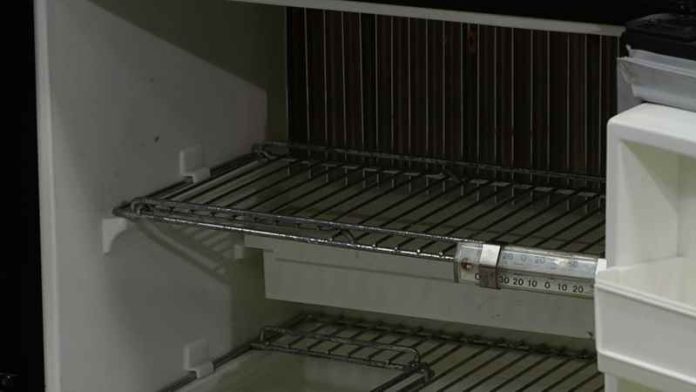Table of Contents
6 Tips on How to Repair RV Refrigerator Issues
Your RV’s refrigerator is an essential appliance for comfortable RV living, and when things go wrong, it’s sure to throw a major wrench in your travel plans. If your fridge stops working properly, you can end up with spoiled food and costly repair bills, both of which are unwelcome expenses when you’d rather be focusing on your next destination. Thankfully, a little maintenance can help you keep your cool and prevent significant refrigeration issues down the line. With these essential tips, you can troubleshoot common refrigerator issues, repair an RV refrigerator and save money, ensuring your food stays cold whether you’re parked at a campsite or cruising down the open road.
1. Get to Know Your Control Panel

Your refrigerator is your powerhouse, operating on LP gas, 120-volt AC power, or 12-volt DC power with an inverter. And while the RV control panel might seem like a small component, it plays a vital role in managing your RV refrigerator. The control panel serves as the brain, determining the default power source and seamlessly switching to an alternate one if needed. Learn how to repair an RV refrigerator control panel and navigate through this essential feature, understand indicator codes, and master the art of seamlessly switching between electrical power and propane so you can say goodbye to the days of relying on ice coolers.
2. Locate the Serial Number

With so many brands, models, and styles on the market, to repair an RV refrigerator it’s essential to locate your refrigerator’s serial number to be able to properly maintain or repair your RV refrigerator. Once you’ve found the serial number, you’ll be able to research your specific model and find accurate information on issues, parts, and more. Common problems may arise, such as overcooling or freezing, so you should always be prepared to address them. Learn how to locate the serial number on your model, and keep in mind that its placement depends on the refrigerator model’s age.
3. Learn to Troubleshoot Overcooling Issues

Optimized for limited space, RV refrigerators employ various systems to ensure smooth operation and maintain desired temperatures. However, some of the most common issues to arise when working to repair an RV refrigerator are overcooling and freezing, which require a bit of troubleshooting. As an RV owner, it’s good to learn how to identify these problems yourself before seeking costly professional help. Do a bit of research to equip yourself with the knowledge to handle overcooling problems and be prepared for future troubleshooting scenarios.
4. Understand Your Power Source

Over the past few decades, RV refrigerators have evolved in terms of power sources, with many models, such as Norcold and Dometic, shifting away from 12-volt battery power. Power options for RV refrigerators now include LP gas and 120-volt electricity, since 12-volt systems have a tendency to drain batteries rapidly, especially for larger units.
However, it’s still feasible for larger refrigerators to operate using an on-board 8- or 12-volt battery bank with the help of an inverter, mimicking the functionality of a 120-volt system. Smaller RV refrigerators with an integrated freezer inside a single door can efficiently run off a 12-volt battery. Understanding the various types of refrigerators and their power sources will give you better insights when troubleshooting, upgrading or working to repair an RV refrigerator.
5. Learn to Troubleshoot Your Propane Refrigerator

Does your RV propane refrigerator have a frustrating habit of starting briefly only to shut off again? This common issue can lead to frustration and confusion, but learning to identify and resolve the problem yourself can help you save money on costly evaluations and repairs.
With a few steps, you can troubleshoot a malfunctioning fridge and discover potential culprits like a cracked spark ignitor or a covered flame sensor probe. By gaining insights into these issues, you’ll be better equipped to address and fix them so you can restore your RV refrigerator to its ideal performance.
6. Secure Loose Parts on Your Refrigerator

If the side-by-side refrigerator in your fifth wheel or motorhome tends to shift during travel, there are several straightforward solutions to address this issue. Depending on the type of RV refrigerator you have, the fix you need could be pretty affordable. There are various components that can be prone to loosening, so a little troubleshooting can go a long way toward identifying potential problems.

Discover where to inspect outside your RV and understand the impacts of jostled components during transit. With a few steps, you can ensure your RV refrigerator stays securely in place while on the move. Don’t let a faulty fridge get you heated. Next time you need to repair an RV refrigerator that’s on the fritz, try these maintenance and troubleshooting tips so you can get back to enjoying your next adventure.

















